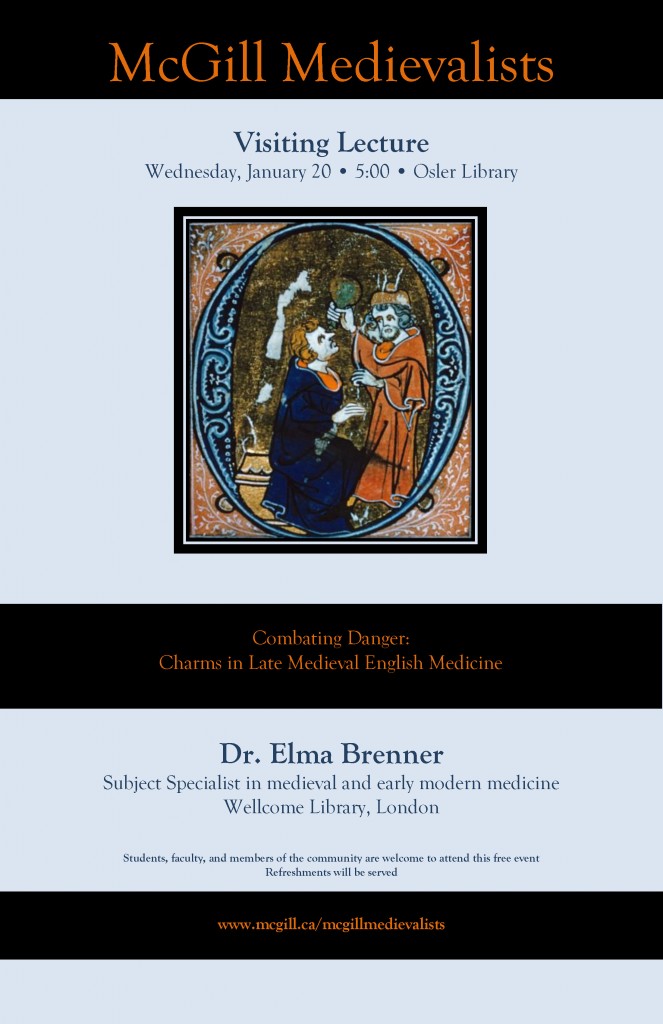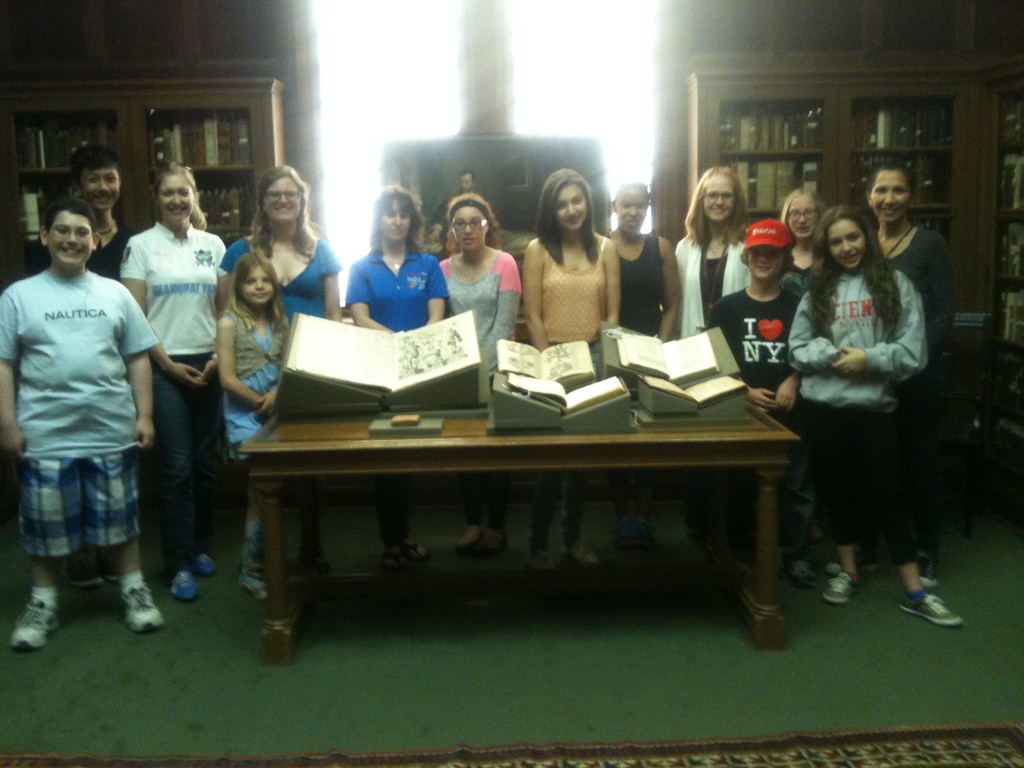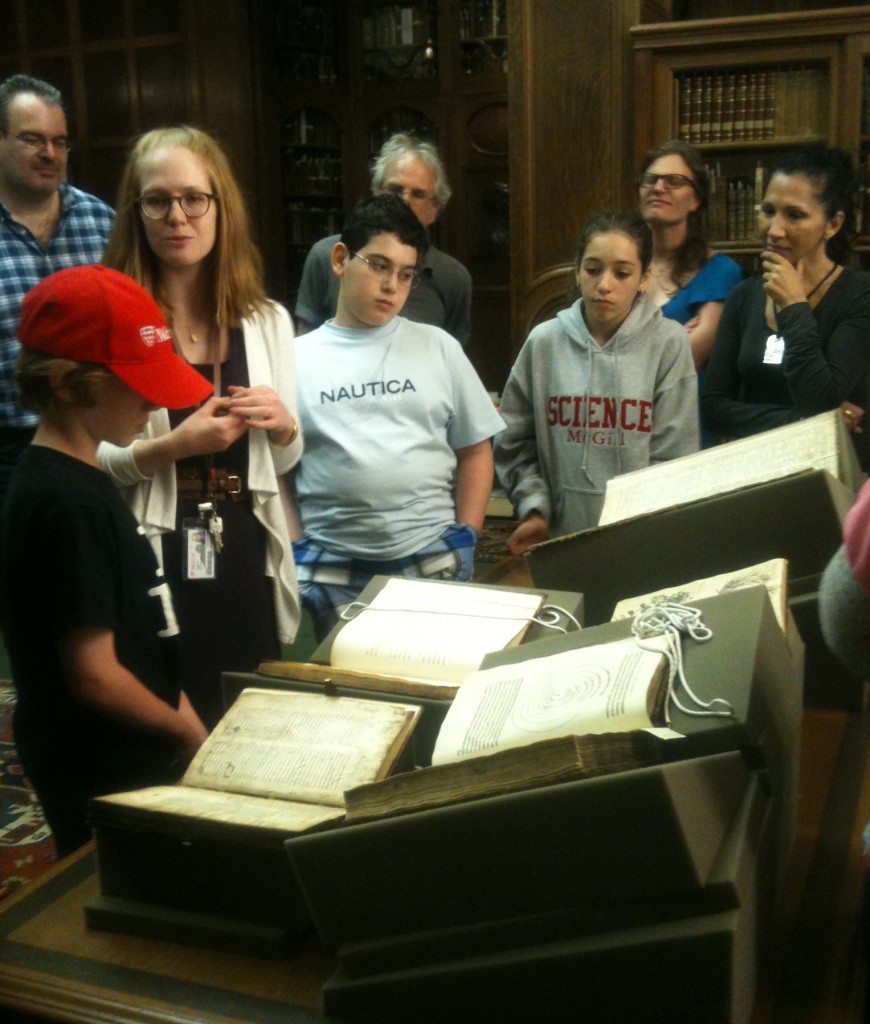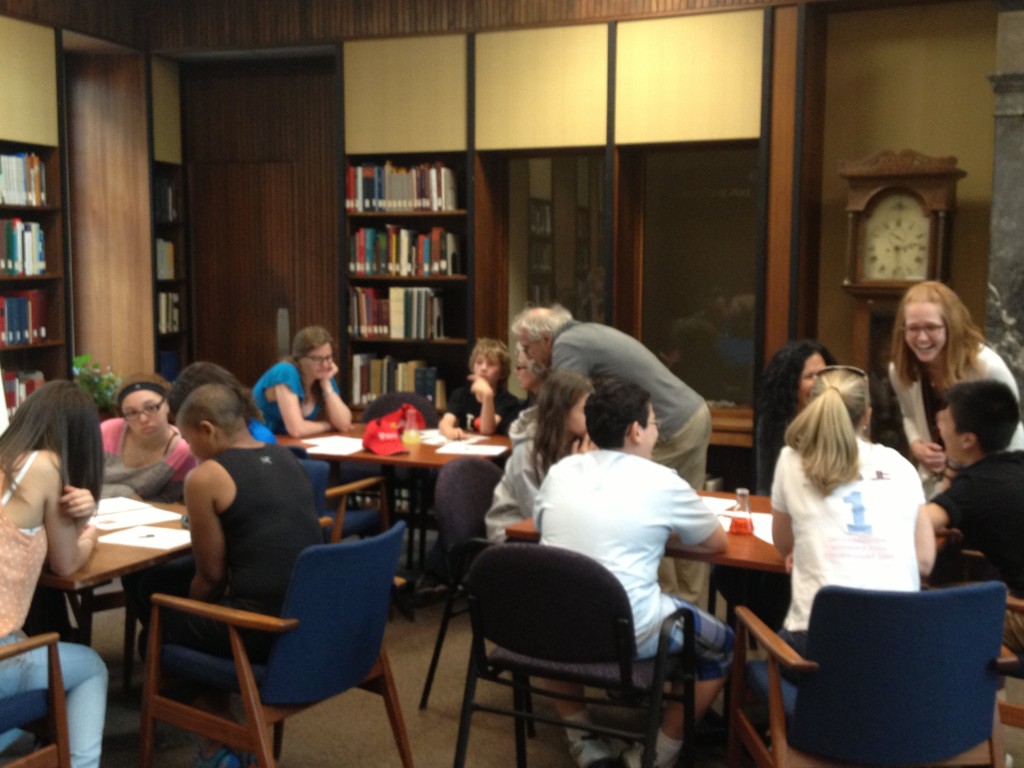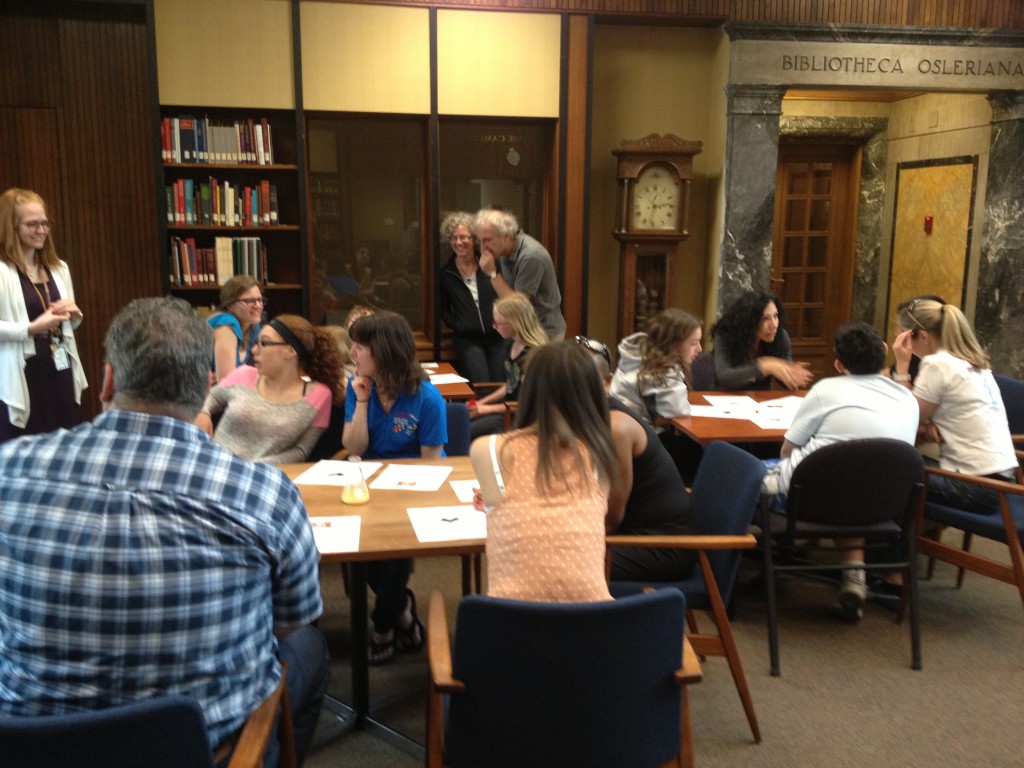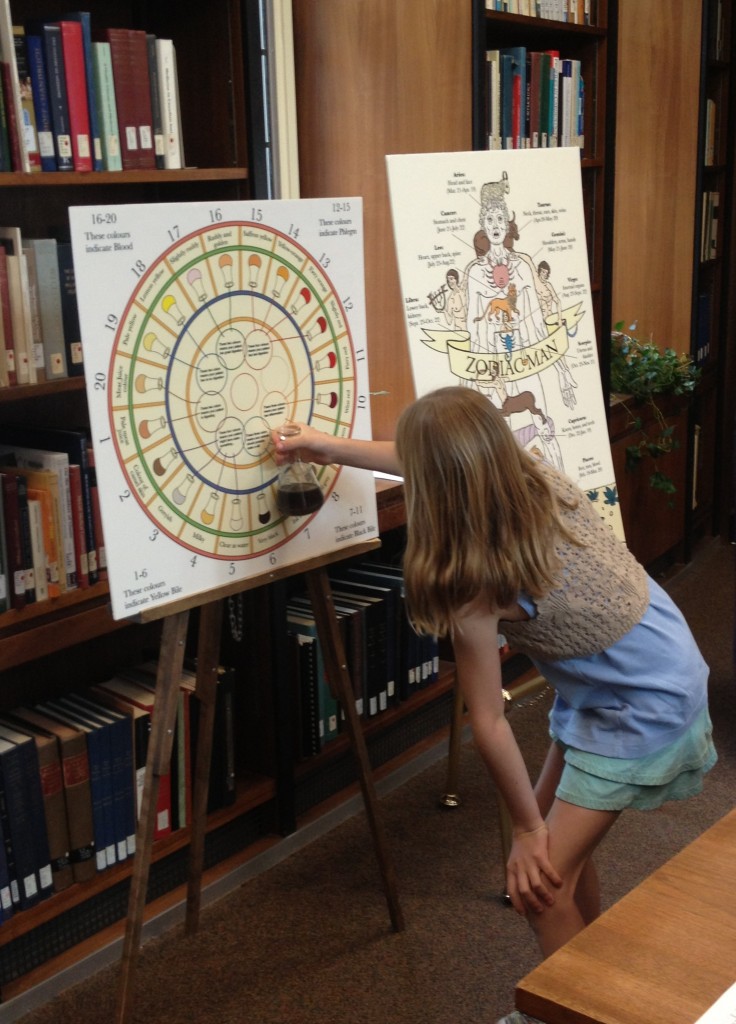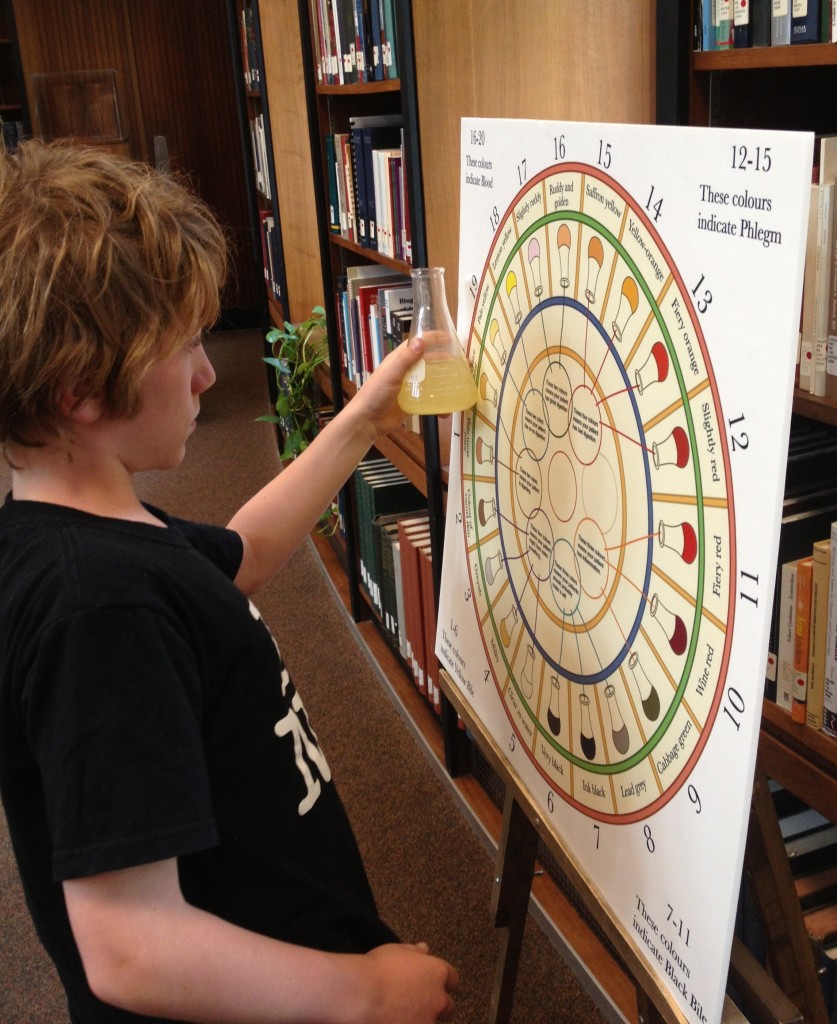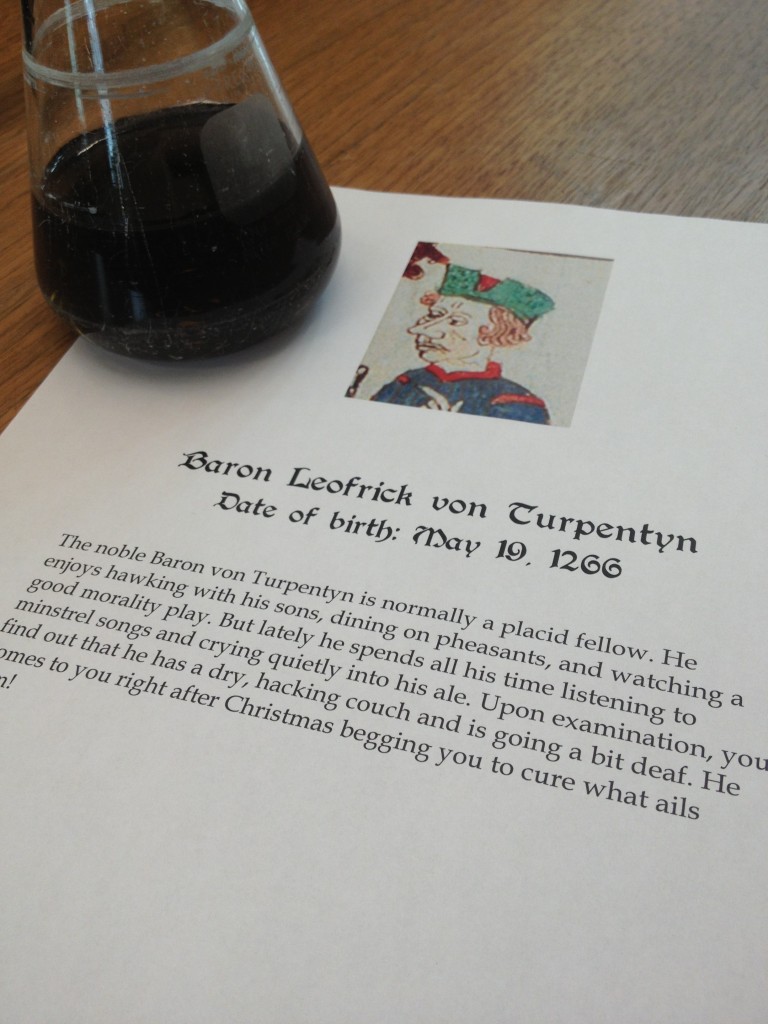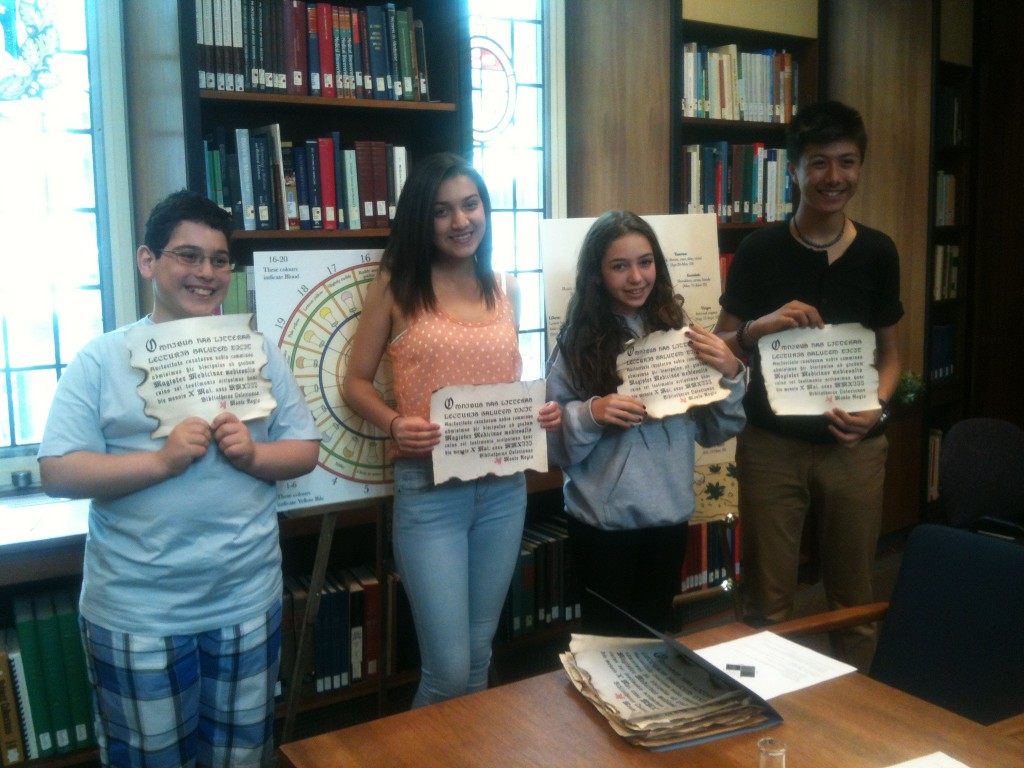The Osler Library’s copy of a medieval medical text written by Johannes de Sancto Paulo (John of Saint Paul) is one of our manuscripts that are available digitally. Bibliotheca Osleriana 7627 is a small early 13th century Latin manuscript containing the Breviarium medicine (“Breviary of medicine”) written by Johannes de Sancto Paulo (fl. 1180), as well as an excerpt from the Liber Pantegni compiled and translated from Arabic into Latin by Constantine the African (1020?-1098/99?). It was rebound probably in the late 19th century in vellum over boards with beautiful marbled pastedowns. The volume belongs to William Osler‘s original donation to the library and is catalogued in his Bibliotheca Osleriana (1). Osler acquired the manuscript from the rare books dealer Luigi Lubrano of Naples in October of 1915.
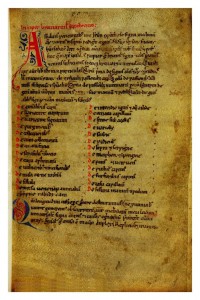
First leaf of the Breviary, with the incipit, an opening line written in red announcing the title of the text (referred to in this copy as the “Breviary of Hippocrates”) and table of contents. BO 7627.
Johannes de Sancto Paulo was a physician active in Southern Italy during the late 12th and early 13th century. He is thought to be among the masters of the Salerno school of medicine, a center for medical teaching and knowledge production well-known for bringing the work of Arabic medical writers into Europe through Latin translation. The breviary, one of four known works by Johannes de Sancto Paolo, is a general guide to practical medicine written probably around the third quarter of the 12th century.
The text is divided into five books. The first book discusses some practical issues about diagnosing and understanding disease, for example, recognizing signs of illness. It also discusses diseases that affect the entire body, like leprosy and skin conditions such as erysipelas. The second book contains conditions relating to the head and upper body, including the respiratory system. In this book are descriptions of and treatments for “psychological” conditions like mania and lethargy, head pain, eye pain, impaired vision, coughs, and asthma.

Chapter on leprosy, De Lepra from BO 7627. A popular topic, one early reader has added a lot of notes in the margin.
Book 3 concentrates on the digestive system with entries on vomiting, stomach pain, diabetes, and more. Book 4 is on the reproductive system and women’s issues like retention of menses and womb suffocation (two worrisome conditions for medieval doctors). Book 5 is on different types of fevers, which medieval people identified as a disease in itself rather than a symptom of illness, as we understand it today.
The second text bound in the manuscript appears to have been written somewhat later than the first. It was often a common practice to bind single texts together in the same binding.
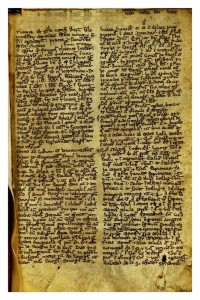
A short extract from the Pantegni section on medical theory, theorica, likely transcribed by a medieval medical student. BO 7627.
The title of the manuscript’s second text, the Pantegni, comes from the Greek words pan and techne, meaning “all the art,” referring to the art of medicine, and was a large compendium of both practical medical treatments and medical theory. These pages are possibly the work of a student copying an extract of this well-known medical textbook for his own reference purposes. In the margin above where the writing begins, the scribe has scrawled in a short plea–sancti spiritus assit nobis gratia. Que cordi nostra sibi faciat, the opening (although slightly garbled) lines of a sequence hymn for the Christian holiday of Pentecost: “May the holy spirit be with us now. May he fashion to him our hearts.”
Further reading:
See a digitized copy of the oldest manuscript of the Pantegni (probably written under the supervision of Constantine himself) from the Dutch National Library here.
To find out more about medieval medicine in general, take a look at Nancy Siraisi, Medieval & early Renaissance medicine: an introduction to knowledge and practice (Chicago, 1990) or Faith Wallis, Medieval medicine: a reader (Toronto, 2010).
A great (and entertaining) resource on medieval manuscripts is the blog Medieval Fragments. A good intro to understanding and researching manuscripts is Raymond Clemens and Timothy Graham, An introduction to manuscript studies (Ithaca, NY, 2007).
References
(1) Sir William Osler, Bibliotheca Osleriana: a catalogue of books illustrating the history of medicine and science (Montreal, 1969).
(2) Monica H. Green, “Johannes de Sancto Paulo,” in Medieval science, technology, and medicine: an encyclopedia, ed. Thomas Glick, Steven J. Livesey, and Faith Wallis (New York, 2005).


